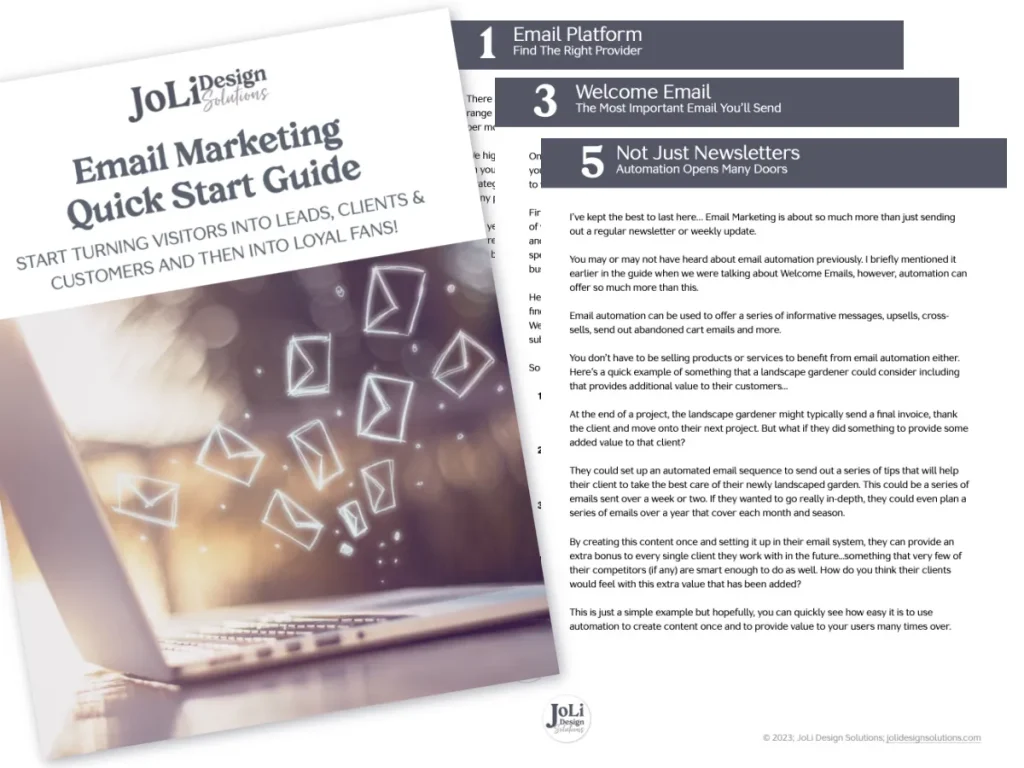Your domain name is the cornerstone of your coaching or service-based business. If something happens to your domain name, you are in a heap of trouble. It’s for this reason that I am going to explain the importance of owning and managing your domain name.
If you’re ready to start your business and purchase your own domain, it’s crucial that you are the owner (registrar). Don’t let somebody else register things on your behalf forget about ownership of your domain.
Many business owners make the mistake of relying on a web designer, agency, employee or friend to take care of the “technical side of things” because it appears too complicated. If there is one “technical” area of your business that you need to be familiar with, it’s your domain.
Disclosure: We often purchase domain names for our clients, but transfer ownership almost immediately. We are a user on the domain as a “Tech Person” but if for any reason we part ways, we can be removed from the domain by the client. This allows us to have access to their domain for any reason we need to add/modify DNS records and make adjustments to support other platforms.
But if you are not the owner and something happens to that person, the business owner can be left in a position where it’s difficult to regain control of their domain name. It’s not impossible to regain control, in some cases they can do so – but it’s a lot of unnecessary stress that could have been easily avoided.
If you have your web designer, or someone else purchase your domain for you (like we often do), make sure that they transfer ownership to you. Also, if this is someone that you don’t fully trust, don’t allow this to happen at all.
What is the purpose of a domain name?
Picture this:
You have a brick and mortar business with a sign out front that has your business name on it (website). It’s time for you to move to another location so you look for another building (hosting) to move to. You’ve found the perfect place!
You move your furniture, files, etc. (website files) to the new location and when you go back to retrieve your sign (domain name), the owner has a lock on it and you can’t move it. The owner won’t unlock it so you try to get another sign for your business.
You find you can’t do that because it’s the same business name – so now you’re stuck.
Super bummer deal! Now what? You don’t own your domain name so you don’t have the ability to move it to a new location.
While a website can be rebuilt, if needed, and you can always move those files to a different host, if you don’t have some “claim” to your own domain name you are in trouble if you ever have a falling out or issue with the person that does.
Your domain is an investment in your business and personal brand. Be in control and manage your own domain.
Purchasing your domain name
We highly recommend Hover for domain registration for a variety of reasons. Mainly because it’s easy. But also because your privacy protection is included and you are not hounded to buy additional products like you are with other companies like GoDaddy.
After you purchase your domain, you can add your web designer/developer to your account so they can set up your DNS servers correctly and do other administrative work you need them to do.
What happens if you forget to renew your domain?
Your domain name will be “turned off.” This means it gets disabled and people who type in “yourdomain.com” will no longer see your website. Your website is still there, sitting innocently on your hosting provider’s server, but it looks like your website is gone!
Your domain, now expired, is listed “for sale”. ? From the time your domain is turned off to the time it shows it is available for purchase can be as little as a few minutes. Someone is free to purchase your domain.
Once this happens, unfortunately, there is no easy way to get it back again. There are no laws governing this and can put you in a really sticky situation.
Be in control and manage your domain
1 – Use only one domain registrar (ex: Hover)
This is especially important if you have multiple domain names you manage, including variations on your main one. Having one place to check for renewals makes life so much easier. So pick a registrar and use them for all of your domains.
2 – Keep your domain record up to date with your information
Domain registrars will send you a renewal notification, before your domain is set to expire, but they can only reach you if your contact information is up to date and the email they send doesn’t end up in your SPAM folder.
Check the accuracy of your name and its expiration date by doing a search with WHOIS Domain Lookup. This will provide you with an online directory of publicly available information on your domain name.
Usually your name is not here, just where your domain is registered. It’s a good place to start.
3 – Register your domain name for up to 10 years
You don’t have to register a name for just one year, you can also register it for two, five, or even ten years, if you prefer.
4 – Set up auto-renew for your domain registration
In the end, this is a small price to pay for peace of mind, knowing you won’t lose your precious name.
5 – Mark your calendar to remind you to renew your domain name
This is an easy way to remind yourself your name is coming up for renewal. Be sure to make it 30 days in advance of the expiration date. This is also a great backup system in case your registrar’s renewal emails don’t get to you for some reason.
It’s so important that your domain is secure, managed and owned by YOU!



